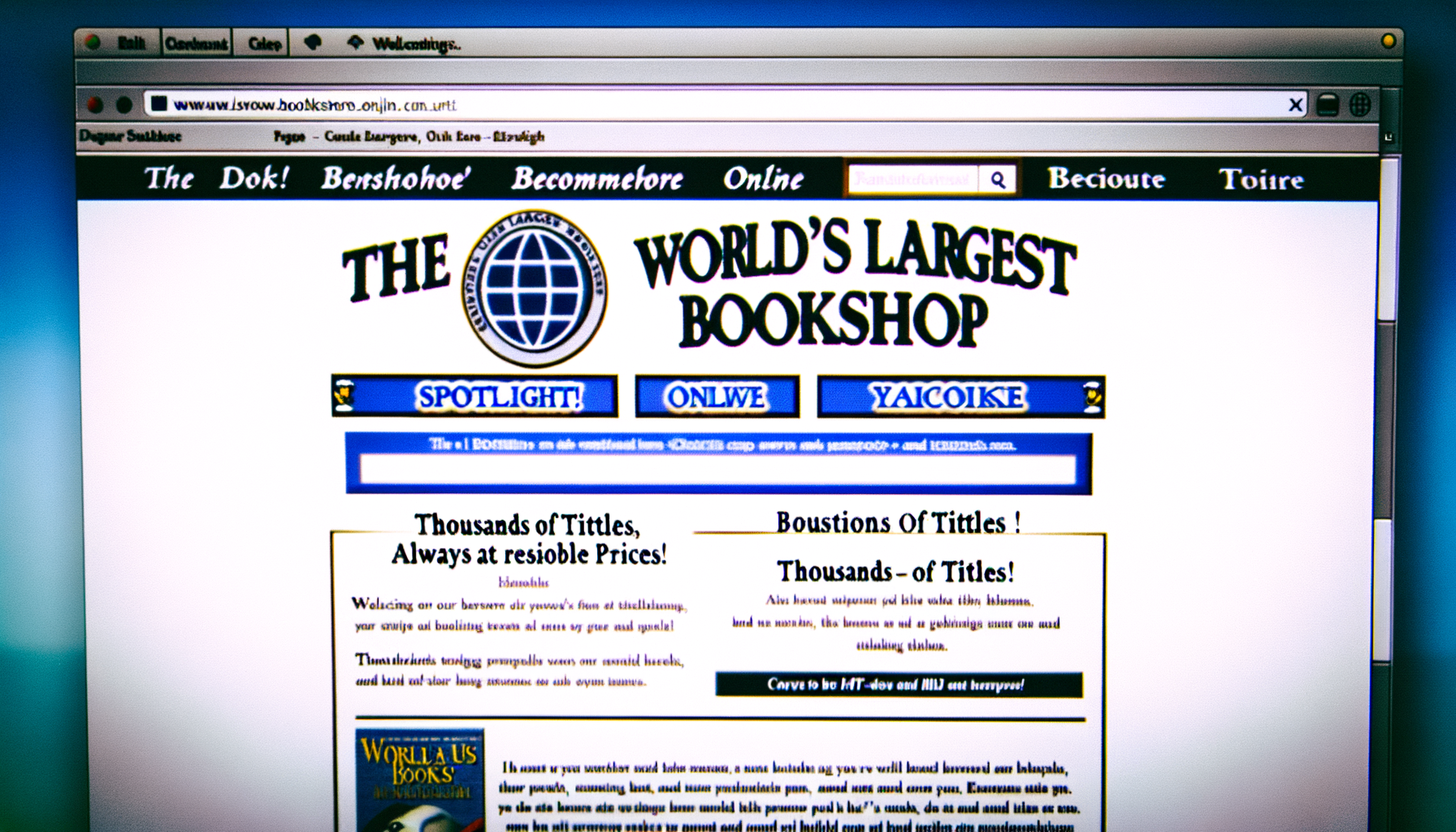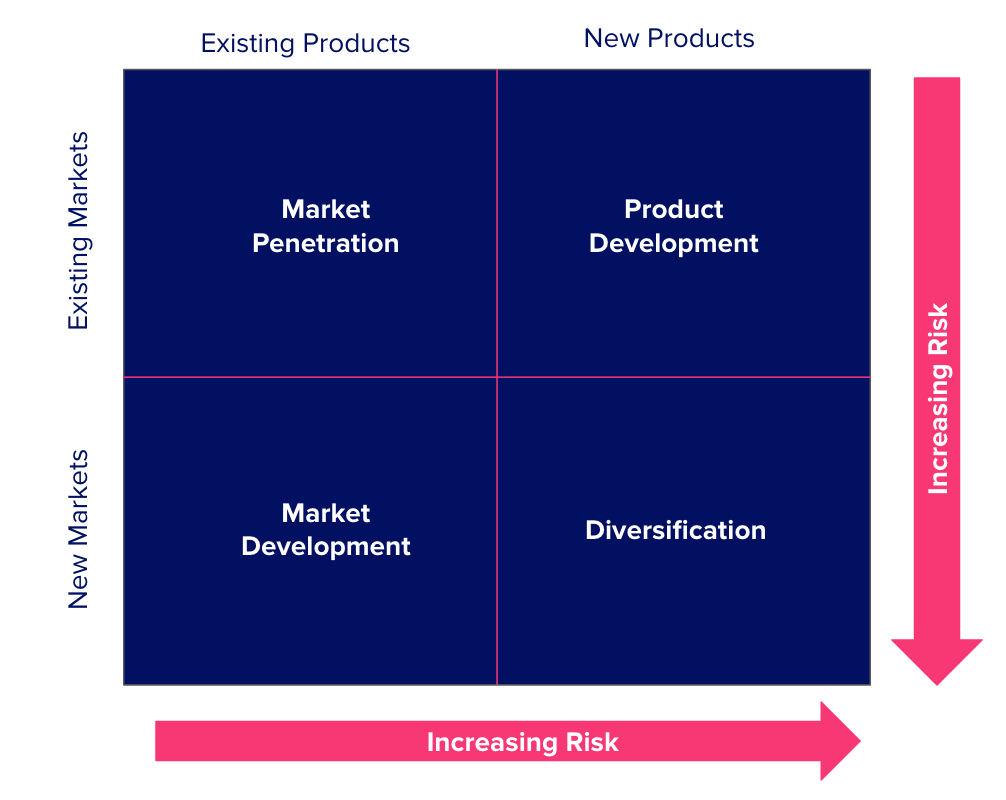There are many marketing lessons we can learn from Amazon, one of the biggest companies in the world.
It didn’t get that way by sheer happenstance. It was a long, diligent road of learning how to listen to their audience’s needs and delivering a customer experience like no other.
In this post, we’ll delve into the marketing lessons we can glean from Amazon and see how they can be applied to drive traffic and foster customer loyalty for your own brand.
6 Marketing Lessons We Can all Learn from Amazon
Beyond the commonly discussed pay-per-click and SEO tactics, Amazon’s approach encompasses various unconventional strategies that contribute to its unparalleled success. Here are the top six.
1) Expand Your Product and Service Offerings
Amazon serves as a shining example of how expanding your product and service offerings can propel your business to new heights.
Originally just an online bookstore (back in 1995!), Amazon’s success story lies in its ability to evolve into a comprehensive e-commerce platform offering a vast array of products and services:

For instance, imagine you run a small online store specializing in electronics. While you may have a loyal customer base, you are limited to a specific niche.
However, by taking a cue from Amazon, you can explore diversifying your offerings.
You could introduce complementary products such as accessories, smart home devices or even digital services like repair and maintenance tutorials. This marketing diversification not only caters to the needs of your existing customers but also attracts new ones who are looking for a one-stop-shop experience:

Moreover, by venturing into new markets and industries, you can tap into additional revenue streams. Amazon’s expansion into grocery stores and cloud computing services illustrates the benefits of diversification when executed well.
Expanding your product and service offerings not only allows you to reach a broader audience, it also leverages your existing channels and infrastructure.
Remember, the marketing lesson here lies in identifying market gaps and understanding your customers’ needs.
You May Also Like:
* Strike Marketing: What We Can Learn from the Hollywood Strike
* What We Can Learn From the New Coca-Cola Marketing Strategy
* 4 Lessons We Can Learn from the Barbie Movie Marketing Strategy
2) Customer-Centricity as a Business Philosophy
Amazon’s relentless commitment to prioritizing its customers has played a pivotal role in its remarkable success. This unwavering focus on putting customers first has earned them trust, loyalty and an ever-growing customer base.
To emulate Amazon’s customer-centric philosophy, you have to strive to build genuine, lasting relationships with your customers:

Start by taking the time to understand their preferences, desires and pain points. Conduct surveys, engage in conversations through social media, and actively listen to their feedback. By doing so, you will gain valuable insights that enable you to tailor your products, services, and overall customer experience to exceed their expectations.
3) Continuous Reinvestment for Growth
Amazon is no stranger to taking calculated risks and exploring new opportunities. They understand that in the dynamic world of business, standing still is not an option. They consistently seek out ventures and initiatives that have the potential to transform their business and reshape the industry.
Of course, not every endeavor they embark upon turns out to be an instant success. Amazon has experienced its fair share of failures (like Askville), but what sets them apart is their ability to transform those setbacks into valuable lessons. They embrace a culture that sees failures as opportunities for growth and innovation. Instead of being discouraged, they learn from their missteps, adapt, and iterate until they achieve success.
A perfect example of their continuous reinvestment for growth is Prime Video.
At the time it first began, Prime Video was a bold expansion that required substantial investment and took Amazon beyond its traditional e-commerce realm.
However, their willingness to take risks paid off handsomely as Prime Video, with its original content and diverse selection, established Amazon as a major player in the entertainment industry. Even now, it’s taking over Netflix as the largest streaming platform in the U.S.:

Dive Deeper: Amazon Advertising Case Studies: The Best E-Commerce Strategies
4) Optimize for Lifetime Customer Value (LTV)
Amazon understands that a customer’s value extends far beyond their initial purchase.
They recognize the immense potential in nurturing long-term relationships with their customers and prioritize the lifetime value they bring to the business:

This customer-centric perspective has been instrumental in Amazon’s ability to establish a loyal customer base and drive sustainable growth.
While other marketers may be solely focused on immediate gains, Amazon is willing to make upfront investments, even if it means incurring initial losses, to acquire and retain valuable customers. They understand that the true value lies in fostering customer loyalty and generating repeat business over an extended period.
To apply this marketing lesson to your own business, it’s essential to shift your focus from short-term gains to the long-term value that customers can bring.
Instead of solely fixating on immediate ROI, consider the potential revenue that can be generated from a customer throughout their lifetime. While the upfront investment in providing these additional services may lead to lower short-term profitability, the recurring loyalty of your customer base will pay dividends in the long run.
Satisfied customers are more likely to renew their subscriptions, refer others to your platform, and potentially upgrade to higher-priced plans:

By optimizing for LTV, you unlock the potential for greater revenue generation and capitalize on the value that loyal customers bring to your business.
5) Ethical Imitation as a Learning Tool
Drawing inspiration from high-performing products and services can provide a wealth of knowledge and practical learning. Amazon has leveraged this approach by identifying successful products in the market and ethically imitating them to create their own versions.
Marketers can adopt a similar approach by creating swipe files and saving creatives that capture their attention and resonate with their target audience. These swipe files serve as a reference and source of inspiration for future campaigns.
It’s important to emphasize that ethical imitation means drawing inspiration and learning from successful strategies while maintaining integrity and avoiding plagiarism or copying content verbatim.
The goal is not to replicate someone else’s work, but to gain insights and adapt those learnings to suit your brand’s unique voice and offerings.
Related Content: How to Use Amazon Reviews for Content and Product Development
6) Transparency Builds Trust
Throughout their journey, Amazon has consistently embraced transparency, even when it may have seemed counterintuitive. Their commitment to honesty, admitting mistakes and showcasing continuous improvement has resonated deeply with consumers, setting a shining example for businesses in any industry.
Take the following tips to heart and you’ll gain the favor of your audience in time:
- Be forthcoming about what you do: Transparency means being open and honest in all aspects of your business, from product descriptions to pricing, shipping policies, and customer support.
- Ratings and reviews: Ensure that your customers have access to honest ratings and reviews. Encourage genuine feedback and make it easy for customers to leave their opinions. This openness builds trust and empowers potential customers to make informed decisions.
- Acknowledging mistakes: Be willing to admit to any mistakes when they occur. If there are any errors in order fulfillment or customer service, take responsibility and work toward resolving the issue promptly.
Consumers appreciate companies that are honest and committed to delivering on their promises. When customers trust your brand, they are more likely to engage with your business, make repeat purchases, and become advocates who spread positive word-of-mouth.
Related Content:
* What Amazon’s Marketing Strategy Can Teach SMB Owners
* What These Disney Marketing Strategies Can Teach Marketers
Final Thoughts on Marketing Lessons We Can Learn from Amazon
Amazon’s relentless focus on customer satisfaction sets it apart. The company’s commitment to providing an exceptional shopping experience, including fast and reliable delivery, a vast product selection, and personalized recommendations, has earned it a loyal customer base.
Moreover, Amazon’s dedication to innovation and technological advancements, such as its highly efficient logistics network and pioneering use of artificial intelligence, has allowed it to continually improve operational efficiency and maintain a competitive edge.
As you apply these tidbits to your own marketing efforts, you will start to see a pattern of the same positive outcomes that Amazon benefited from over time. It all stems from adopting a customer-centric approach that is driven by preserving your customer base no matter what.
If you’re ready to level up your brand by learning from Amazon’s success, Single Grain’s Amazon marketing experts can help!👇
Repurposed from our Marketing School podcast.






